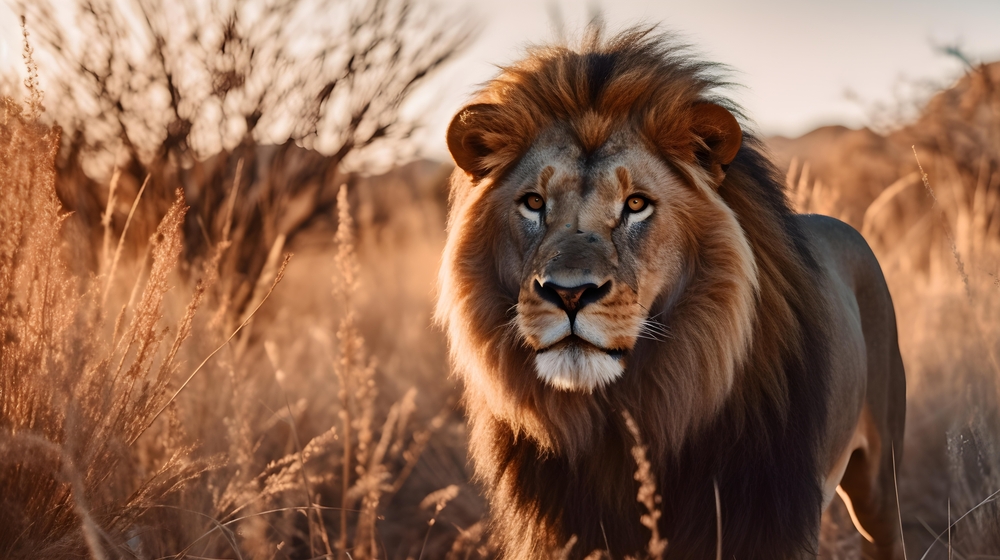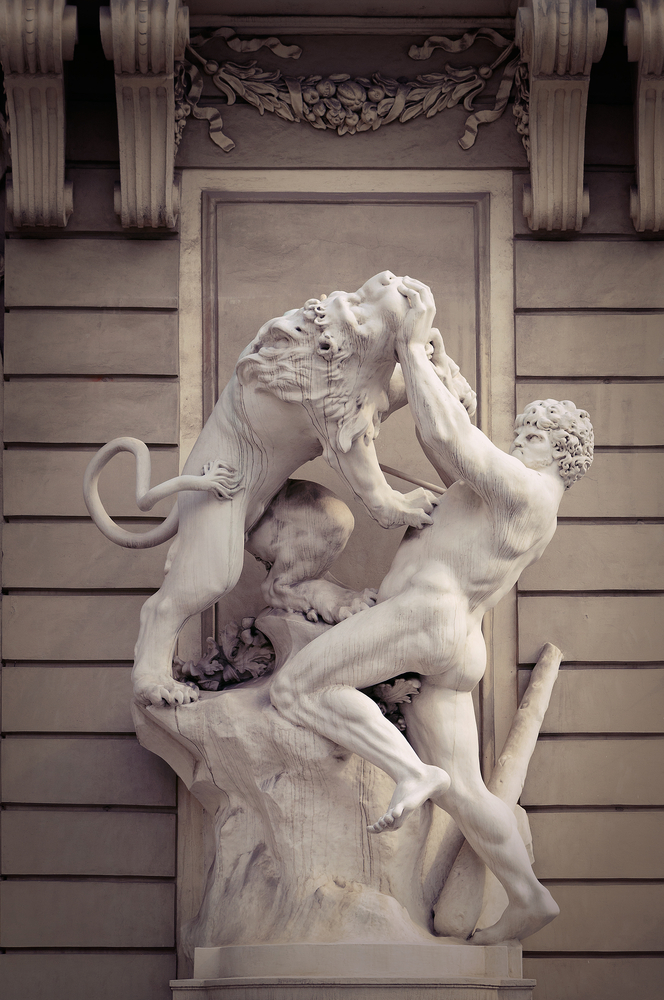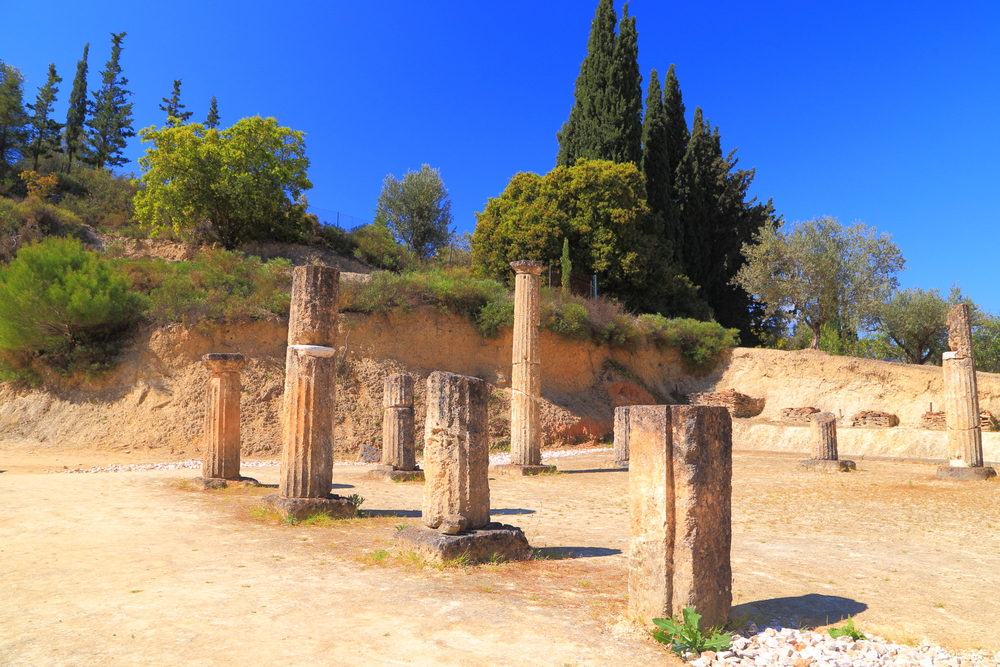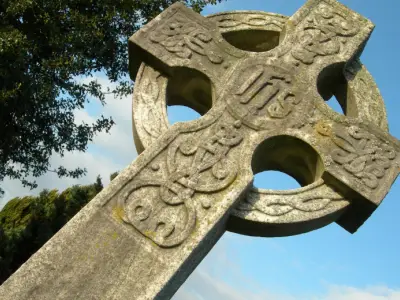The Nemean Lion is a legendary creature from ancient Greek mythology, known for its part in Hercules’ twelve labours. Whether you're a long-time enthusiast of mythological tales and ancient monsters or new to the genre, this majestic and fearsome beast offers symbolism, stories, and excitement. Let’s explore more in this blog post.
Jump to:
Who Was the Nemean Lion?

The Nemean Lion was a symbol of ultimate challenges and unbeatable obstacles. According to legend, this monstrous lion had fur so tough that no weapon could penetrate it, making it virtually invincible. The lion roamed the valley of Nemea, terrorising the people and defying those who dared challenge it.
What does "Nemean" mean?
The term "Nemean" derives from Nemea, a region in Greece where the lion's tales were set. This geographical connection roots the lion's story in the real world while elevating it into the world of legend.
Recommended for you!
Best SellersThe Nemean Lion's Powers and Symbols
The Nemean Lion was known for its supernatural powers that made it nearly invincible. Its most notable power was its impervious hide, which no weapon could pierce, symbolising ultimate protection and resilience. Additionally, the lion's strength and ferocity made it a symbol of indomitable spirit and unstoppable force in ancient tales, representing obstacles that required more than mere physical strength to overcome.
The Namean Lion’s Myths

The myths of the Nemean Lion highlight the creature's integral role in stories that teach lessons of strength, courage, and resilience.
Hercules and the Nemean Lion
The story of the Nemean Lion is famously linked with Hercules (Heracles in Greek), and it’s his first labour out of the twelve he was assigned. The lion was both a physical challenge and a test of Hercules's wit and resolve. How did Hercules defeat the Nemean lion, you might wonder? After realising that his arrows were ineffective, Hercules used his immense strength to wrestle the lion, eventually strangling it to death. This encounter highlights the themes of bravery and perseverance.
After defeating the lion, Hercules didn't just leave behind the carcass. He skinned the lion, using its impervious hide as a cloak and its head as a helmet. This act was symbolic, representing Hercules cloaking himself in the power of his defeated enemy. The imagery of Hercules with the lion head and wearing the lion skin became iconic, symbolising protection and invincibility.
Zeus and the Nemean Games
After the death of the Nemean Lion, Zeus, the king of the gods, instituted the Nemean Games as a tribute to the slain lion and as a means to honour the hero Hercules. These games were celebrated with various athletic and musical competitions, drawing participants from across the Greek world and serving as a reminder of the lion’s formidable nature and Hercules’s triumphant victory.
The Lion's Escape from Olympus
Another lesser-known myth suggests that the Nemean Lion was originally a guardian creature on Mount Olympus, who escaped to the earthly realm due to a feud among the gods. Its presence in Nemea was said to be a consequence of divine conflict, further linking the beast to the themes of power and protection in the mythological tapestry.
The Nemean Lion's Relationships and Family Tree
In mythology, the Nemean Lion is often said to be a descendant of the monstrous Typhon and Echidna, making it part of a family notorious for their fearsome natures and challenging confrontations with heroes. This lineage highlights the lion’s role within a broader narrative of mythical creatures designed to test the mettle of gods and mortals. The connection to such powerful creatures adds a layer of depth to the lion's mythological significance and its place in the Greek pantheon.
The Nemean Lion's Legacy

The Nemean Lion's legacy extends far beyond its defeat at the hands of Hercules. It lives on in numerous cultural expressions, from artworks to literature, symbolising the classic battle between man and nature, heroism, and the triumph of human ingenuity over seemingly insurmountable challenges.
The lion's story also set the stage for the Nemean Games, similar to the Olympic Games, which celebrated the themes of victory and human skill. These aspects of the lion's story ensure that it remains a powerful symbol of the challenges that heroes must face and overcome, resonating through centuries as a testament to human resilience and courage.
Frequently Asked Questions About the Nemean Lion
How Big Was the Nemean Lion?
The Nemean Lion, as described in myths, was much larger than any ordinary lion. While exact dimensions are never specified in the ancient texts, the lion's enormous size added to its fearsome reputation, making Hercules' victory over it even more impressive.
What Was the Nemean Lion's Weakness?
Interestingly, the Nemean Lion's major weakness was not something external but rather the limitation of its invulnerability being confined to its hide. Hercules discovered that he could not defeat the lion with weapons and had to resort to strangling it, demonstrating that brute strength and direct contact were required to overcome the beast.
Why was the Nemean lion important?
This creature's story teaches lessons about overcoming impossible challenges. The myths surrounding the Nemean Lion have been a source of artistic inspiration, appearing in various forms of art and literature, emphasising its lasting impact.
Is the Nemean Lion Real or Fake?
Like most mythological creatures, the Nemean Lion is a product of cultural storytelling, likely inspired by real-world encounters with lions or other big cats by ancient Greeks, blended with fantastical elements to teach lessons or entertain.
Was the Nemean Lion Truly Evil?
In contemplating whether the Nemean lion was bad, it’s important to understand that in mythology, creatures often embody more than mere good or evil. The lion was certainly a deadly threat to those around it, but its role was more about being a hurdle for heroes to overcome, testing their mettle and virtue.
Who Strangled the Nemean Lion?
It was Hercules who strangled the Nemean Lion. This feat was the first of his twelve labours, assigned to him as a penance and path to redemption. By using his sheer strength and tactical thinking, Hercules managed to defeat a creature that all weapons had failed against.
bolising the internal and external battles one must fight to achieve greatness or redemption.
How Did the Nemean Lion Become Invulnerable?
The myths vary in detail, but one popular version suggests that the Nemean Lion was a child of Typhon and Echidna, two monsters in Greek mythology, which could explain its supernatural qualities. Another version claims it was placed in Nemea by Hera, the queen of the gods, specifically to challenge Hercules.
Can I Visit Nemea Today?
Nemea is a real place in Greece and can be visited today. It's an archaeological site rich with history. Visitors can explore the ruins and imagine the legendary feats that took place there.
Recommended for you!
Best SellersDiscover Greek Mythology With Centre of Excellence
To delve deeper into these fascinating stories, why not explore our Greek Mythology Diploma Course? You'll learn about the legendary Hercules and the Nemean Lion and uncover the meanings behind many other myths.
Why Centre of Excellence?
- Accessibility: We are committed to making learning accessible to everyone. This is why our Greek Mythology Diploma Course is priced at just £29, making it affordable for anyone interested in these legendary tales.
- Flexibility: Our courses are crafted with your lifestyle in mind. Study at your own pace and fit your learning around your schedule, easily integrating your studies into your life.
- Dedicated Support: When you enrol, you’ll receive personalised tutor support and become part of a vibrant community of like-minded learners. We are here to support and guide you every step of the way.
Special Offer
We are delighted to offer you this captivating course at a special discounted rate of just £29, saving you over £100!













